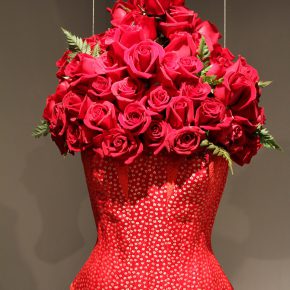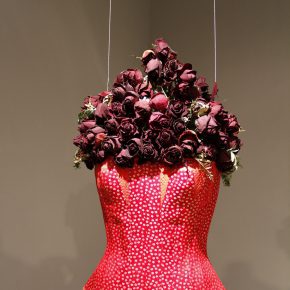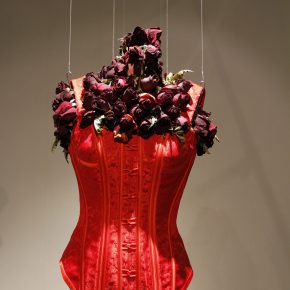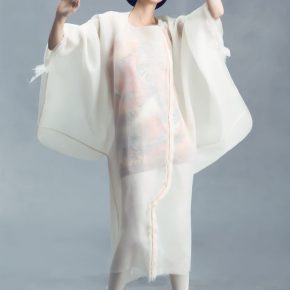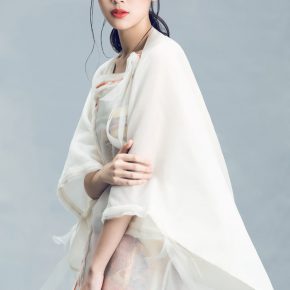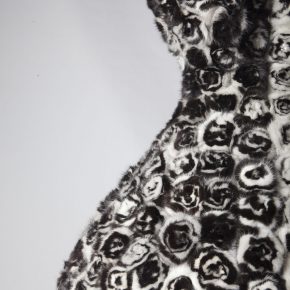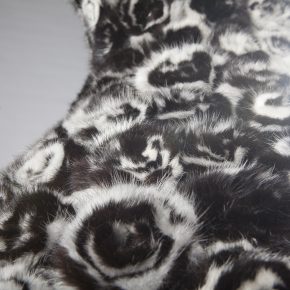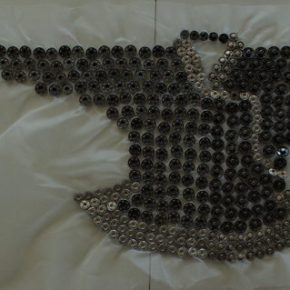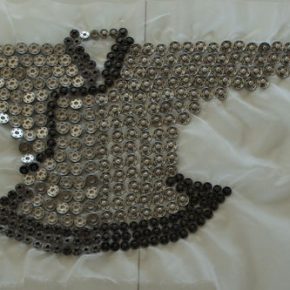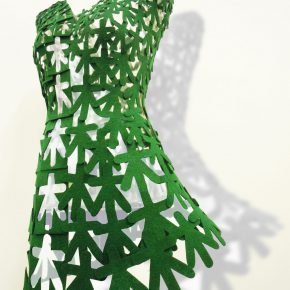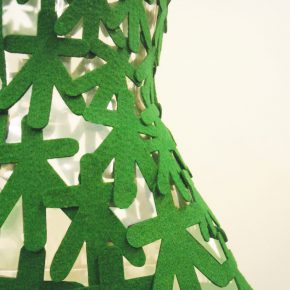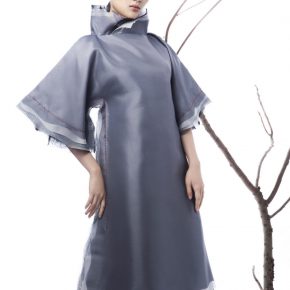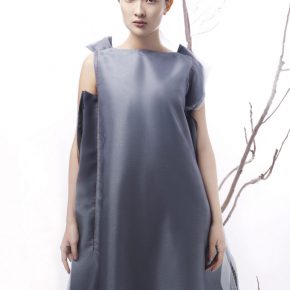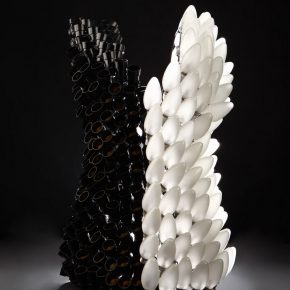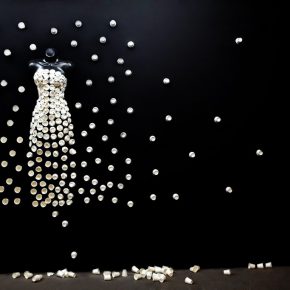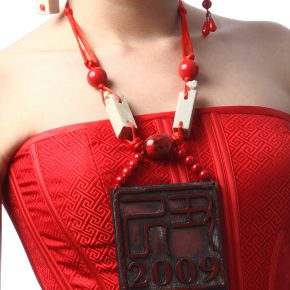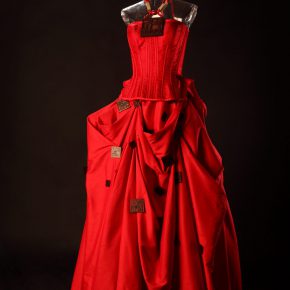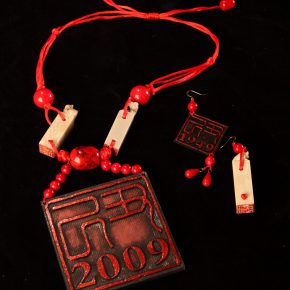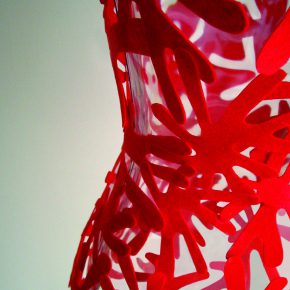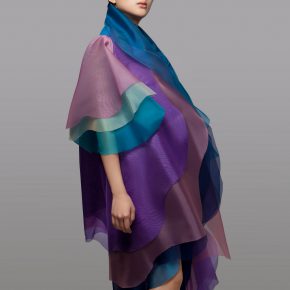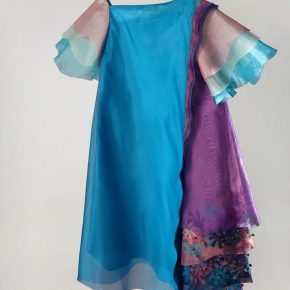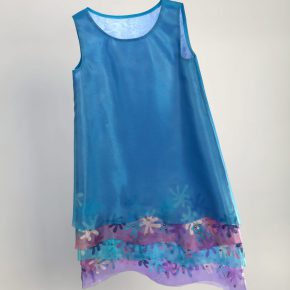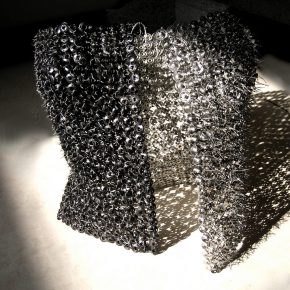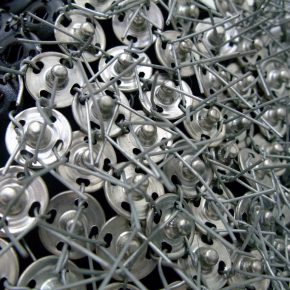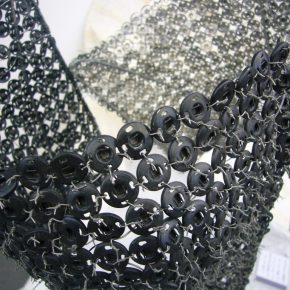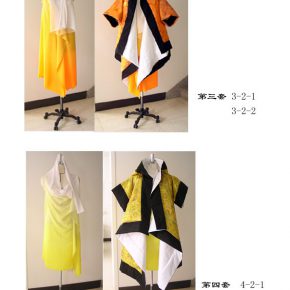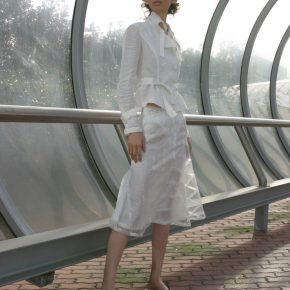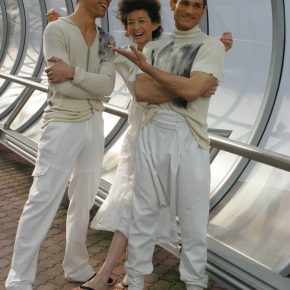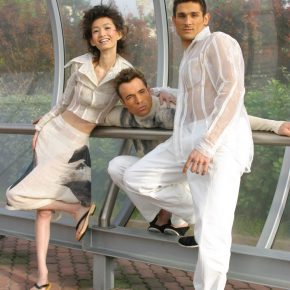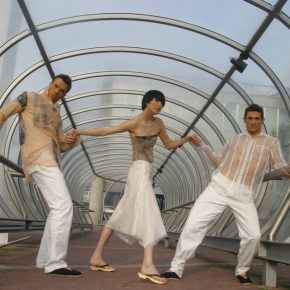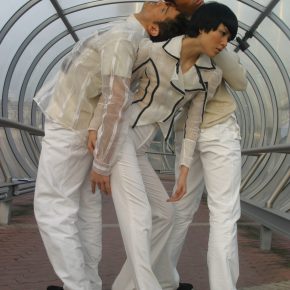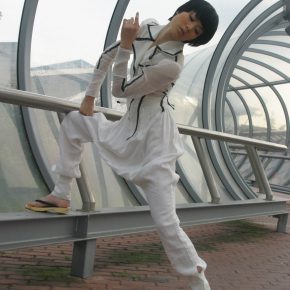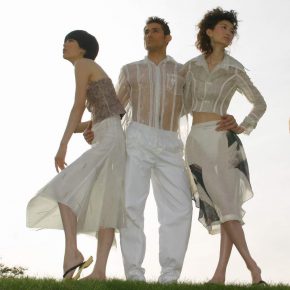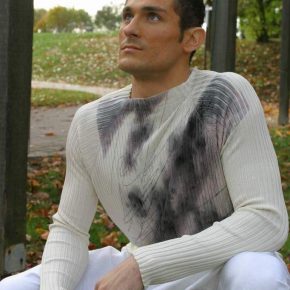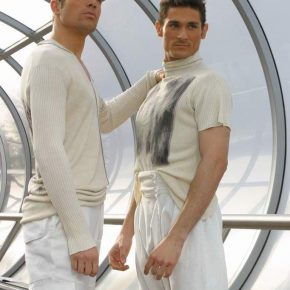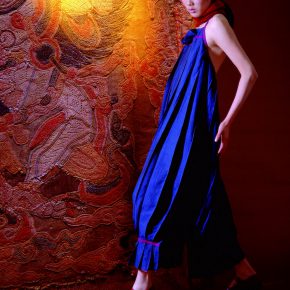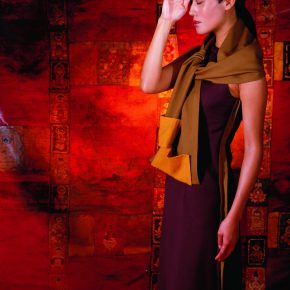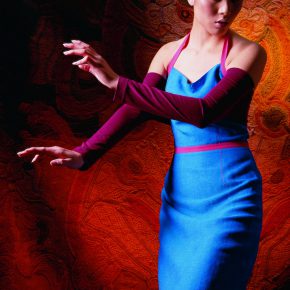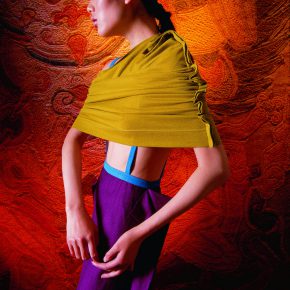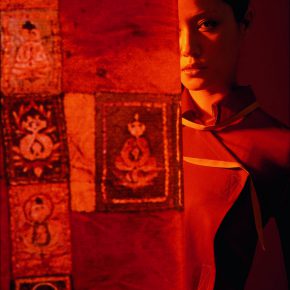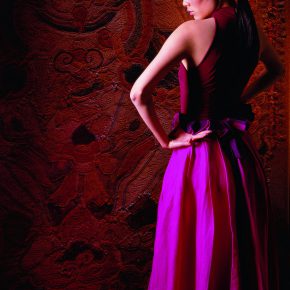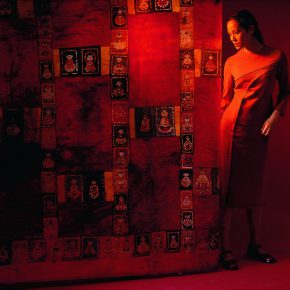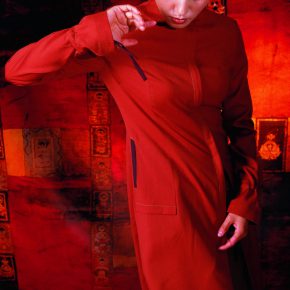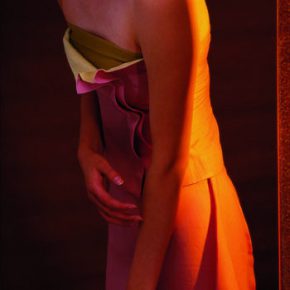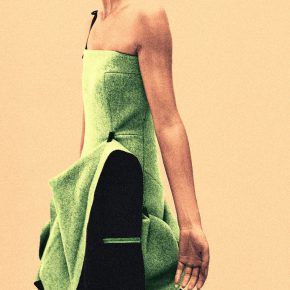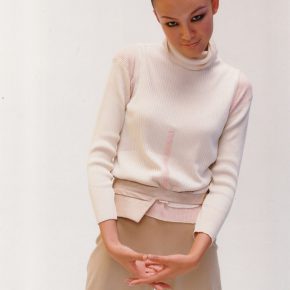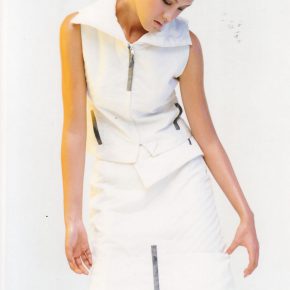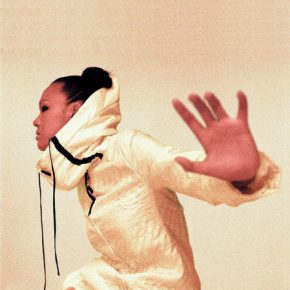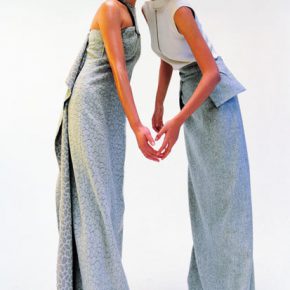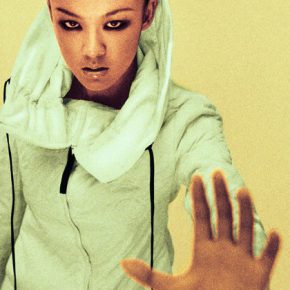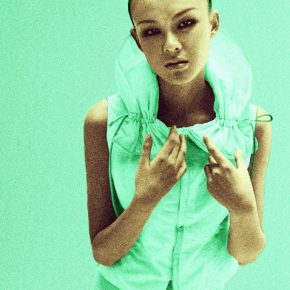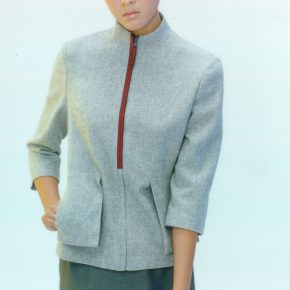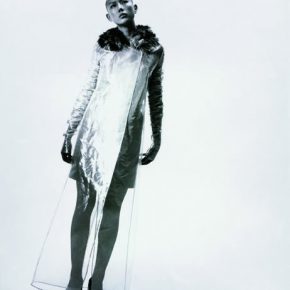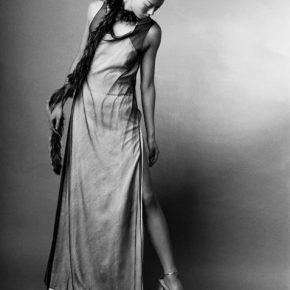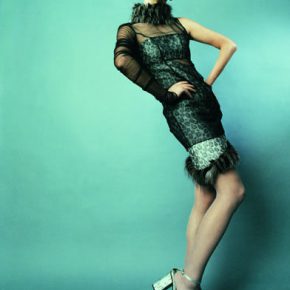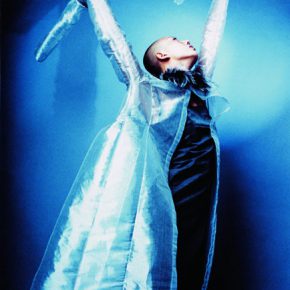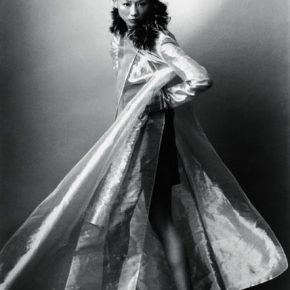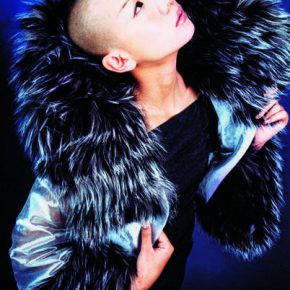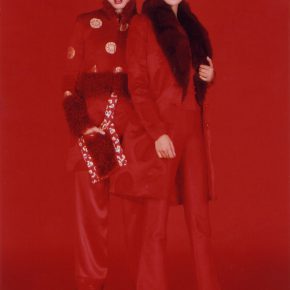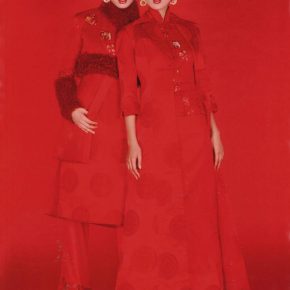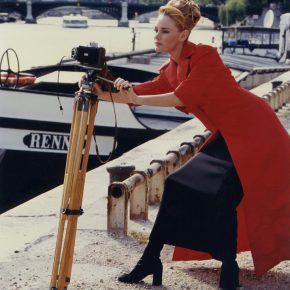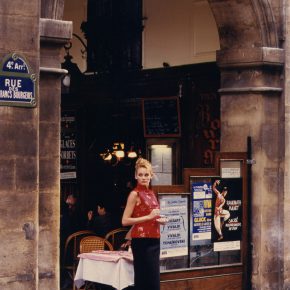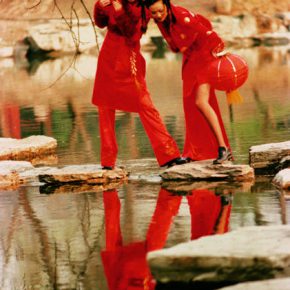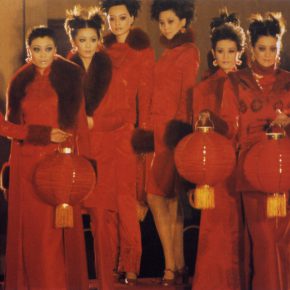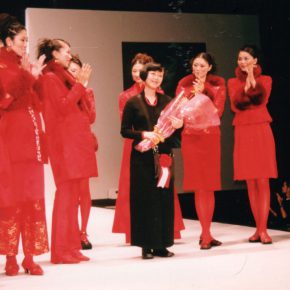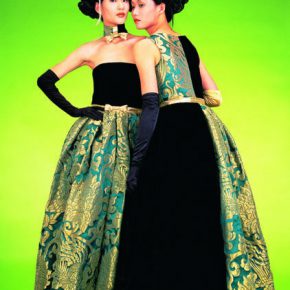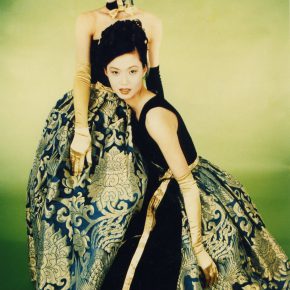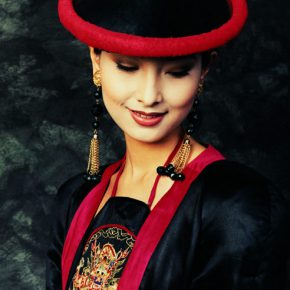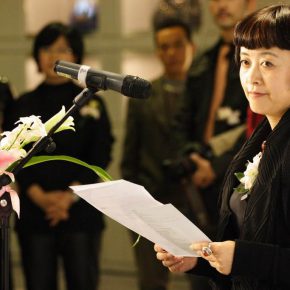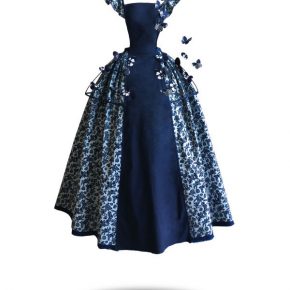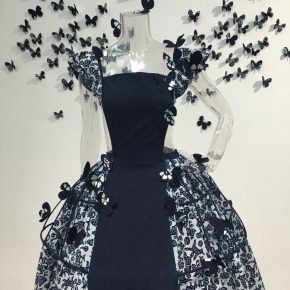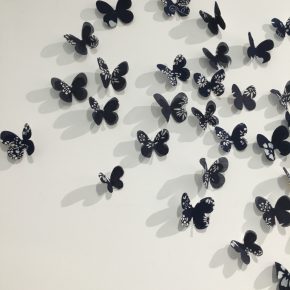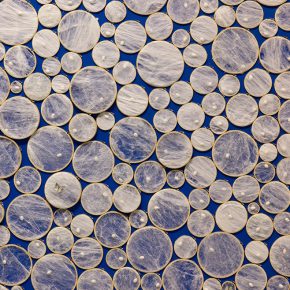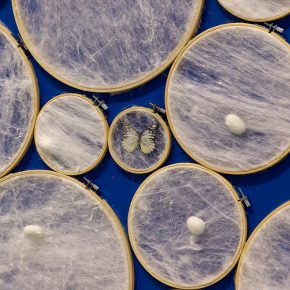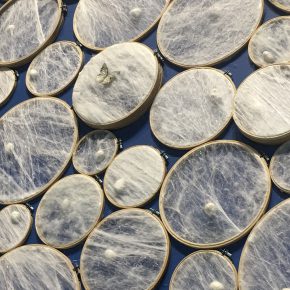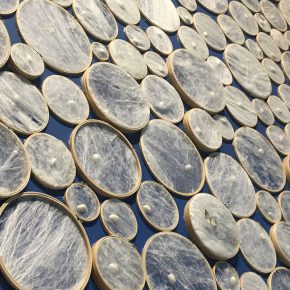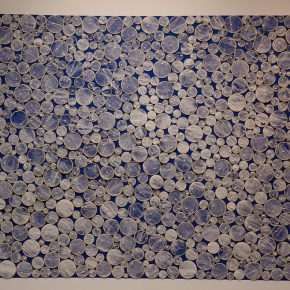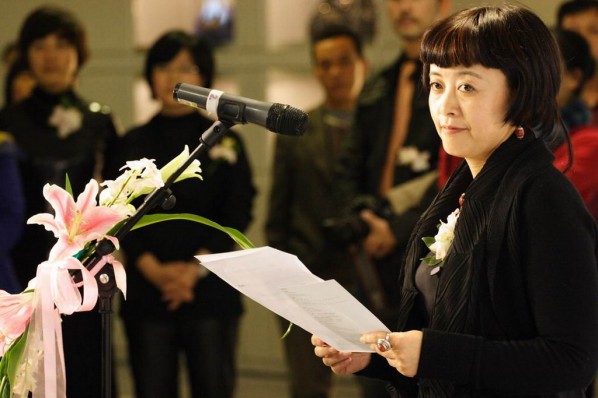
Lyu Yue (Aluna)
Wang Chuan: THE TOTEM OF ART – Talking about the Fashion Design by Lyu Yue
Looking at this album of Aluna-yue, Lyu’s collections one appreciates the artistic charm of dress even more than before. Modern garments are more than just for covering the body and protecting it from the cold. They have cultural functions, tending towards art. When the social function of garments begins to fade away, fashion as a culture no longer serves just a handful of people and instead becomes popularized. Fashion design is different from other types of creativity. It changes with the times and it spreads quickly. It is the pulse and nerve of international trends, since it is close to our daily lives. Fashion design changes from person to person, from place to place, from period to period, from material to material. Ever-changing, compatible, international and ruthlessly challenging it catches our attention. Fashion designers take the beauty of the human body as their standard and focus on major trends in world culture, art and life styles, creating a range of collections which guide fashion as a whole with their beautiful and gorgeous garments. Fashion design is an artistic activity that leaves wide scope for creativity. It displays mankind’s yearning for beauty and for art. It is a kind of “totem of art”.
As one of China’s fashion designers of real ability, Aluna-yue, Lyu is already known abroad. Her works have transcended China’s borders. As an excellent fashion designer Lyu Yue not only possesses a solid basic technique, out-standing drawing skills and has mastered advanced production techniques, she also has a unique artistic sensibility which constantly gives her totally new inspiration. In most kinds of art today, the difference between excellence and mediocrity often lies in a person’s sensibility towards art. Over several years of studying, teaching and designing. Aluna-yue, Lyu has accumulated abundant knowledge and experience, as well as a wide knowledge of aesthetics. She has absorbed inspiration from life, information from international exchange and useful elements from culture. She takes in everything, storing it up for future use. She rearranges, splits up, reconnects and refines the many elements that affect changes in fashion and by so doing has created a number of fashion collections that carry her unique stamp.
The ability to reach marvelous results by marshalling one’s inspiration and finding inspiration from different spheres are all precious qualities for an artist. A lot of Lyu’s marvelous ideas have come from seizing the inspiration of the moment. On one New Year’s Eve Aluna-yue, Lyu was rushing back from a tour to Western Europe. The moment she got off the plane the joyous mood of home enveloped her. The intense red colour so special to China adorned everything, forming a consolidated joyful colour tone only found during festival periods. Aluna-yue, Lyu was inspired to design a collection using the bright red colour of the Chinese folk style, using over ten different shades of red, the garments embroidered with golden bunches of aowers, and with wide, bright red fur linings on the collars, sleeves, waistlines and the hems of the skirts. To highlight the festival mood, Aluna-yue, Lyu made the models wear braids and other national hair styles and had them walk slowly and leisurely, carrying large red lanterns, down a catwalk covered by a red carpet. The impression was one of bright redness and joyousness. This collection, named “Festival Day”, is now one of Aluna-yue, Lyu’s most representative. Red is the colour most loved by the Chinese dress with popular Western fashion. It has become rpresentative of modern Chinese fashion on the international stage.
Aluna-yue, Lyu’s “Totem Era” collection makes use of the most primitive of fabrics, namely furs and leather. Human beings wore them in primitive times. Using animal skins to clothe ourselves originated from the worship of animals as totems. After a long historical evolution the dominant position of leather slowly made way for silk and wool fabrics. The way we view leather apparel has changed from “showing bravery” to “showing beauty”. With her special eye, Aluna-yue,Lyu has given leather a totally new meaning. A lot of her leather creations, having no embellishment, emphasize and underline the roughness of leather. They emphasize the feeling of the materials, their texture and original colour, causing them to stand out in the modern environment. She even let that they have just been torn off the animal’s body. This wild leather feeling makes the creations seem more unconstrained, rustic and wild. With ease Aluna-yue, Lyu handles the different texture and feel of blank leather, coarse leather, double-faced leather as well as long-haired furs. She not only matches various setting them off against each other and finding harmony in their contrasts. The feelings of nobility and gravity, refinement or ruggedness of leather all come into their own in this contrast and matching. She also skillfully uses different pieces of dyed leather which she joins together, changing our understanding of what used to be the monotony of dyed leather, by giving it an altogether new colourfulness.
She has also designed the ingenious “Highland Colours” collection. Fashionwear with a heavy Tibetan feel, these clothes consist of colorful leather pieces joined together. The leather pieces by themselves have a rough, solid and tough texture and Aluna-yue, Lyu feels these qualities exactly correspond to the qualities of Tibetan dress; she highlights this primitive, unconstrained feeling in her designs. The most typical Tibetan dress is Pulu, with a woolen fabric colorful as the rainbow. In designing this collection, Lu extracted the colour elements of the Pulu, then deconstructed and reassembled them again. In this way, the overall style of Tibetan dress is preserved while at the asme time modern sentiments are expressed. When models wearing jewellery of exuberant native style, display these garments of yellow, red, blue, green and black leather stripes stitched onto dense, heavy deep-coloured leather the impression is just like colourful sunlight over the Qinghai-Tibetan Plateau-gorgeous and lively, colourful and powerful Whether we look at the creations from a distance or examine their quality up close they impact powerfully on our sense of sight. Chinese traditional painting has always emphasized that “the charm lies between likeness and not likeness”. The German playwright Brecht maintained that acting should not be too like real life: it should not be a reproduction of life but a demonstration of life. Therefore he proposed the theory of alienation (“Verfremdung”). Precisely this theory is perfectly expressed in Aluna-yue,Lyu’s fashion designs.
Aluna-yue, Lyu’s works are humanistic and humane. Her purpose in creating fashion is that people should accept it, Clothes are made for people. With this goal in mind any classical or modern style is just an element and not a finished product for her. When she showed a set of the latest style of menswear she had designed, she broke the convention of having the models walk back and forth on the catwalk and instead asked professional actors to work together with the models and perform sketches, highlighting the place of ther creations by presenting them in life-like settings. This distinct concept is quite new and bold not only for China but also abroad. It is a completely new attempt to combine fashion and performance art, thereby increasing the extension of the art of fashion.
The diversity of her works is testimony to he’r inclusiveness. She is a fashion designer capable of designing clothes for women as well as for men. Among her works there are exquisite, graceful and restrained evening dresses, furs and leathers as well as knitwork. She has successfully designed menswear of the latest type as well as rather avant-garde creations. Her works include nostalgic Victorian evening gowns as well as Rococo frocks. Then there are the collections of German expressionism-type: half abstract and half concrete, half classical and half modern.
Summing up, Aluna-yue, Lyu’s collections give us a feeling of deep lingering charm. Her starting point is always the human body. Her attention is on people’s actual lives. She does not try to use her work to please the public with cheap effects. Therefore, looking at Aluna-yue,Lyu’s collections brings a sense of generosity, comfort, simplicity and nobility. The cultural connotation is importantto her. Her work sometimes has the youth and liveliness of Art Deco fashion or the simplicity and forthrightness of Bauhaus. 50metimes again they are replete with the newness and sharpness of presentiment and then there are some which have a kind of elegant and nostalgic romanticism. She is able to skillfully combine and blend them all and to form them into a “Aluna-yue, Lyu style” of her own fresh individuality.
About Lyu Yue
LYU YUE (Aluna), Professor of Central Academy of Fine Arts( CAFA), Founder to Fashion Department, CAFA, Member of Chinese artists association, The chairman of the academic committee and managing director of China Fashion Association, Director of the China Fashion & Color Association, Curator of fashion art international exhibition.
ART RESUME
2017 Madame Butterfly SUSAS 2017 (Minsheng Wharf of Shanghai, China)
2017 Change LOOM-The contemporary art exhibition ( SUZHOU JINJI LAKE ART MUSEUM, China)
2017 Red Woman The Silk Road and Celestial Clothes (The ancestral temple museum of art, Beijing)
2016 Relic 2016 International Fashion Art Biennale in Seoul (Art center of the university of Hongik, Korea)
2016 Three Stanzas of Plum-Blossoms, Red Woman, Dragonet Identities Fashion Show(General Admission ofHarvard University, The United States)
2016 Madame ButterflyBlue-Fashion Art International Exhibition (Art Future Space of Ordos, China)
2015YUE LU AND HER STUDENTS (Long Gallery of Beijing 798 art district, China)
2015 Water – wood – gold Bloom–Fashion Art International Exhibition (Wetland science museum, Changsha, China)
2014 Plug-in space 2014 International Fashion Art Biennale in Seoul (Art Center, Korea)
2014 Red Woman Jie (Today Art Museum of Beijing, China)
2012 Stay joss-stick2012 International Fashion Art Biennale in Seoul (Centre for Contemporary Art, Korea)
2012 Involution Game And Home (CAFA Art Museum, Beijing, China)
2011Wood of the Five Elements2011 International Exhibition in Den Haag (Den Haag art center, Netherland)
2009 Union of Life Asia Forever (Thailand-Museum of Siam, Thailand)
Courtesy of the artist, edited by Sue/CAFA ART INFO.


